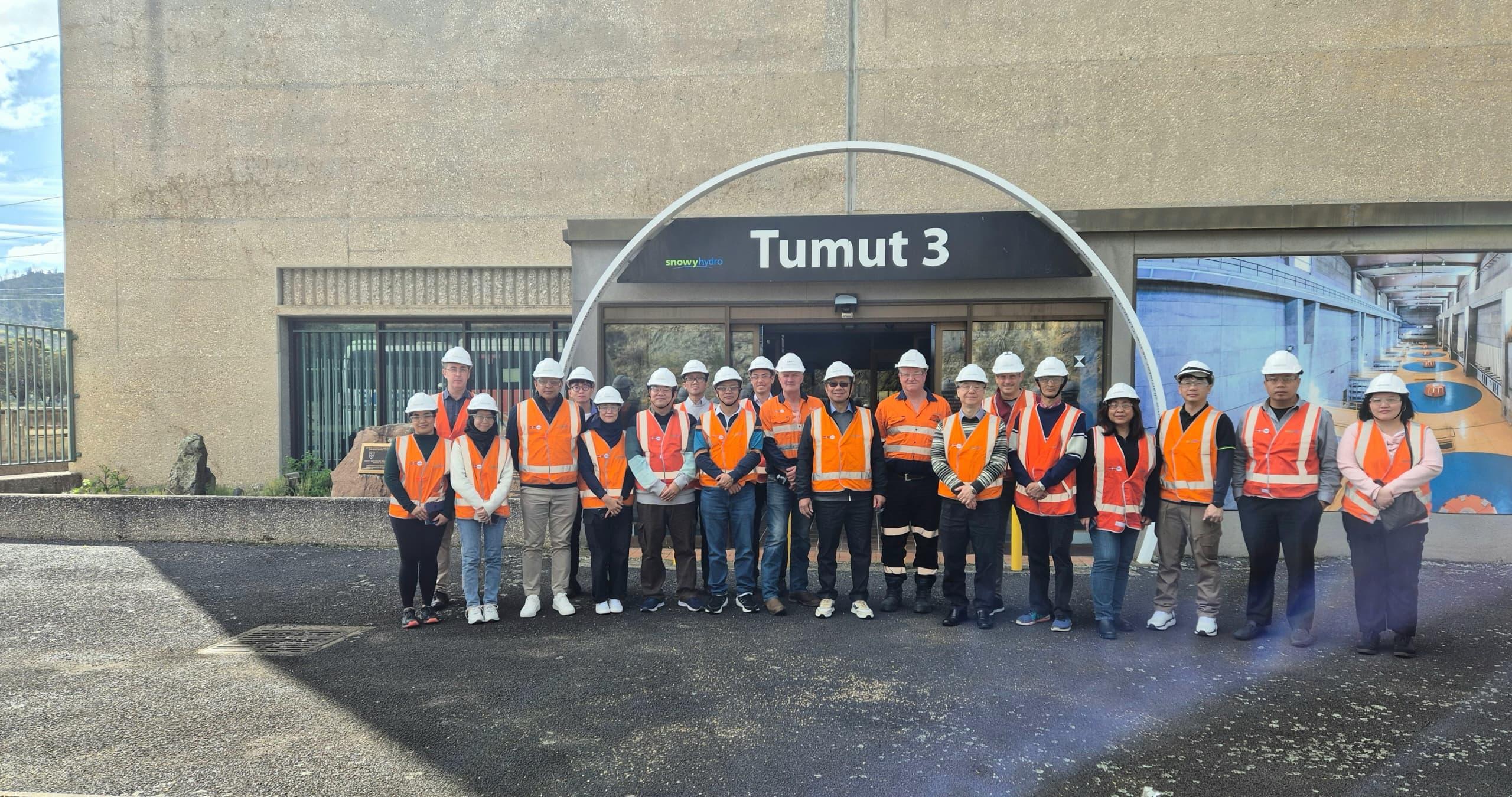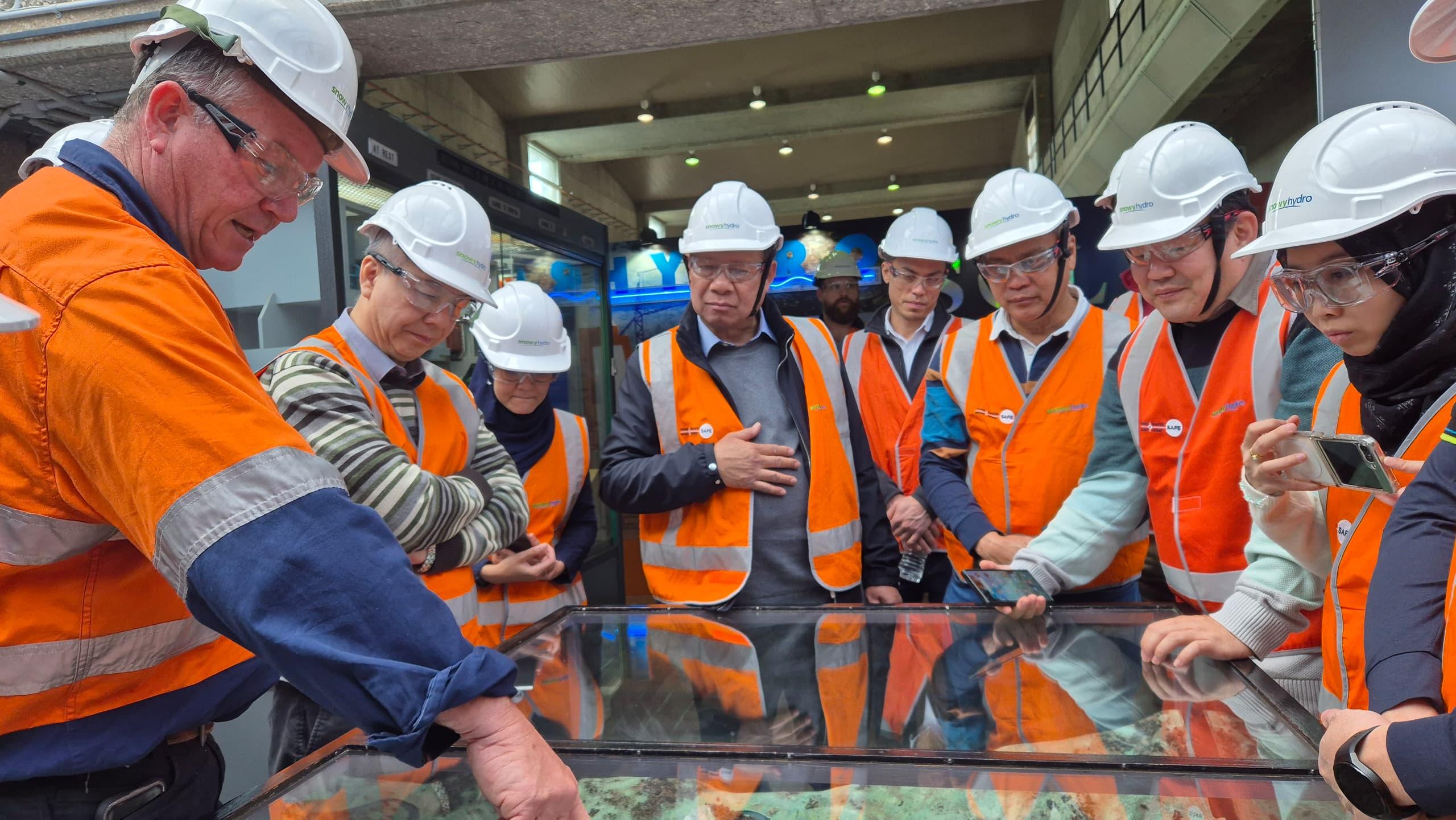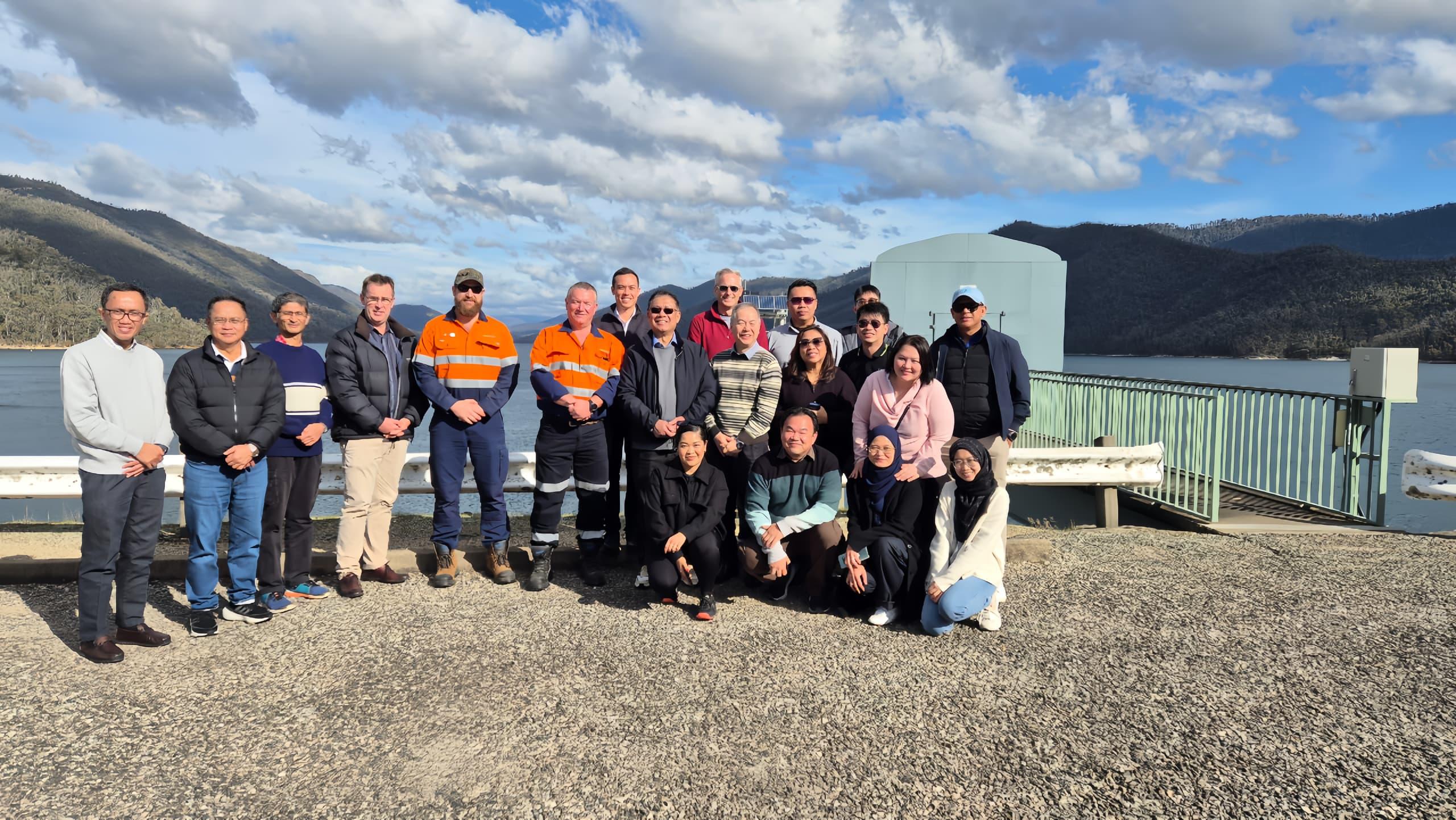

NEWS & UPDATES
NEW SOUTH WALES, AUSTRALIA
28 AUGUST 2024
As Sarawak works to expand its renewable energy capacity, the Ministry of Utility and Telecommunication (MUT) with Sarawak Energy is spearheading studies and engagements related to the Government’ focus on Cascading Power Sources (CPS). Pumped Hydro Energy Storage (PHES) is under serious consideration as a component in achieving Sarawak's target of generating 10GW of energy by 2030. PHES generates electricity using gravity to release water that has been pumped from a lower reservoir source to an upper reservoir, supplying power to the grid when required.
A delegation from the MUT and Sarawak Energy, led by The Honourable Dato Sri Haji Julaihi Narawi, Minister of Utility and Telecommunication, visited the Snowy Hydro Tumut 3 facility in New South Wales on Tuesday, 27 August on a working visit to understand the feasibility of PHES in Sarawak.
The Snowy Mountains Hydroelectric Scheme comprises eight hydro power stations, including two that are underground. The scheme’s eight power stations, equipped with 33 turbines, have a total generating capacity of 4,100 megawatts (MW), producing an average of 4,500 gigawatt hours of renewable electricity annually.
The Snowy Hydro Tumut 3 Power Station is a key part of the Snowy Mountains Hydroelectric Scheme, one of Australia's major hydroelectric and PHES facilities.
Tumut 3 is the first major pumped-hydro plant in Australia and the largest to date. It recycles water between the Talbingo Reservoir and Jounama Pondage for generation and pumping. The Sarawak delegation received briefings on the operational aspects of Tumut 3 and toured Talbingo Dam, the upper reservoir of the power station, which plays a crucial role in electricity generation and water management.
The Sarawak delegation includes Syed Mohamad Fauzi Shahab, Deputy Permanent Secretary and Director of Electricity Supply for MUT; Ir. James Ung, Group Chief Operating Officer of Sarawak Energy; Ir. Bunyak Lunyong, Chief Executive Officer of SEB Power; Nick James Arnett Wright, Sarawak Energy’s Senior Vice President for Business Development; and other officials from MUT and Sarawak Energy.
The study visit was facilitated by the Australian Department of Foreign Affairs and Trade (DFAT) through its Partnerships for Infrastructure (P4I) initiative and aims to provide insights into Australia’s energy transition efforts and development technologies, particularly PHES. The study mission began on Monday (26 Aug) with an engagement session between the Sarawak delegation and representatives from DFAT, P41 and the Australian National University in Canberra. These discussions focused on the technical, market, and regulatory frameworks essential for PHES projects, which Sarawak is considering as part of its energy strategy.
CPS and PHES studies and engagements include working visits to regions where projects have been successfully implemented, such as in Austria and Australia. The MUT and Sarawak Energy are also committed to engaging with local communities as part of their feasibility studies on CPS and PHES, ensuring that communities are included in Sarawak’s renewable energy development.


YB Dato Sri Haji Julaihi Narawi, Minister of Utility and Telecommunication (12th from left), along with members of the Sarawak PHES study mission delegation, pose for a group photo outside the Tumut 3 Power Station. Also pictured with the minister are Peter Symons (11th from left) and DeanLynch (13th from left) from Snowy Hydro.


Dean Lynch of Snowy Hydro (left) explains a model of the Talbingo Lake to YB Dato Sri Haji Julaihi (fourth from left) and the Sarawak delegation during their technical tour of the Tumut 3 Power Station and pumped hydro facility


Members of the Sarawak PHES study mission delegation in a group photo at the Talbingo Dam.